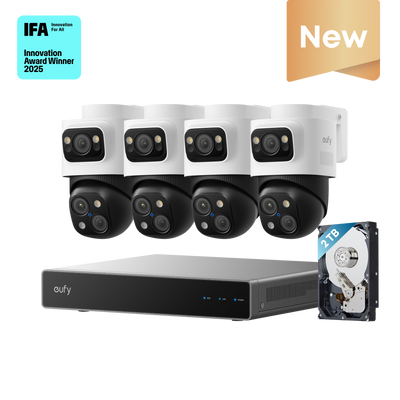When setting up a reliable internet connection, the type of Ethernet cable you use matters more than you might think. If you’ve ever searched for network cables, you’ve likely seen Cat5 vs Cat6 listed side by side, but what do those labels really mean? The difference can affect your internet speed, stability, and how future-proof your setup is. This guide breaks down what Cat5 and Cat6 Ethernet cables are, how they compare, and how to choose the right option for your home or office.

What Is Cat5?
Category 5 (Cat5) is an older type of Ethernet cable that was widely used for home and office networks in the late 1990s. It was designed to support speeds up to 100 Mbps with a bandwidth of 100 MHz, which was more than enough for typical internet use at the time.
Cat5 cables use twisted pairs of copper wires to reduce interference, but they lack the advanced shielding found in newer standards. Because of this, they’re more vulnerable to signal loss and crosstalk (when signals from one wire interfere with another).
Today, Cat5 is considered obsolete and largely phased out. The version you’ll actually see in use nowadays is Cat5e (Category 5 Enhanced). Introduced in the early 2000s, Cat5e improved on the original Cat5 by reducing crosstalk and boosting performance.
Unlike Cat5, Cat5e supports up to 1 Gbps speeds at 100 MHz bandwidth, which makes it capable of handling most everyday internet needs, browsing, video calls, streaming, and typical office work. Because it’s widely available and inexpensive, Cat5e remains the default cabling in many homes and small businesses.
What Is Cat6?
Category 6 (Cat6) is a newer Ethernet standard that improves on the limitations of Cat5 and Cat5e. With support for up to 10 Gbps speeds (over runs up to 55 meters) and a 250 MHz bandwidth, it offers much more headroom for demanding applications.
Cat6 cables also use tighter twists, upgraded shielding, and often include a separator (spline) to minimize crosstalk, giving them better reliability in noisy environments. This makes them well-suited for setups that need consistent, high-speed performance, like streaming in 4K, competitive online gaming, or moving large files across a local network.

Cat5 vs Cat6: Key Differences
When you ask about the difference between Category 5 and Category 6 cables, the real comparison is usually Cat5e vs Cat6. Plain Cat5 is outdated and rarely installed anymore. Cat5e is the workhorse of existing networks, while Cat6 was introduced to add more bandwidth and improve how cables handle interference.
Here’s how Cat5 or Cat5e and Cat6 stack up when it comes to speed, design, and everyday performance:
Speed & Bandwidth
- Cat5: Cat5 was originally designed for Fast Ethernet, handling speeds up to 100 Mbpsover 100 meters with about 100 MHz of bandwidth. It was adequate in its time, but by today’s broadband standards it’s long outdated.
- Cat5e: Cat5e improved on Cat5 by tightening the cable specifications, which made it reliable for Gigabit Ethernet (1 Gbps) up to 100 meters (328 feet) at 100 MHz. Thanks to the IEEE 802.3bz standard, Cat5e can also handle 5 Gbpsand even 5 Gbps on existing wiring, as long as your networking hardware supports those speeds.
- Cat6: Cat6 doubles the bandwidth to 250 MHzand is rated for 1 Gbps up to 100 meters, with strong support for 2.5 Gbps and 5 Gbps as well. It can also push 10 Gbps, though only on shorter runs — usually up to about 55 meters under typical conditions. If you want 10 Gbps across the full 100 meters, you’ll need to step up to Cat6A.
Construction & Physical Differences
When people first see Ethernet cables, they often wonder, “Is Cat 5 and Cat 6 the same?” At a glance, they look identical because both use the same RJ-45 connectors. But the real differences are inside the cables.
Wiring
A clear Cat5 vs Cat6 physical difference is in their wiring. While all three standards use four twisted pairs of copper wires, Cat5 had looser twists, Cat5e tightened them to reduce interference, and Cat6 tightens them even more.
Many Cat6 cables also include a plastic spline (a cross-shaped divider) to keep pairs apart, which further limits near-end crosstalk (NEXT).
Shielding
- UTP (Unshielded Twisted Pair):The most common type for Cat5 and Cat5e. These rely solely on the wire twists to block interference.
- STP/FTP (Shielded/Foiled Twisted Pair):More common in Cat6, these add foil or braided shielding around the pairs or the whole cable. Shielding makes the cable bulkier but more resistant to electromagnetic noise in offices, server rooms, or factories.
Copper thickness (AWG)
Cat5e cables typically use 24 AWG conductors, a thinner copper wire. On the other hand, Cat6 cables usually use 23 AWG conductors, a slightly thicker copper. The lower the AWG number, the thicker the wire, so Cat6 has a bit less electrical resistance. This contributes to its ability to carry signals more reliably at higher frequencies.
How to identify Cat 5 vs Cat 6:
- Cat5:Labeled “Cat5” on the jacket, thin and flexible, with looser twists. Rare in modern use.
- Cat5e:Marked “Cat5e,” slightly thicker than Cat5 but still flexible. Uses 24 AWG copper, no spline inside.
- Cat6:Marked “Cat6,” noticeably thicker and stiffer. Uses 23 AWG copper, often includes a spline, and sometimes has shielding.
Real-World Performance and Use
- Cat5:Limited to Fast Ethernet (100 Mbps). If you encounter it today, it’s almost always in older buildings. Not suitable for modern broadband or heavy network use.
- Cat5e:Still the most common cable in homes and small offices. Reliable for Gigabit Ethernet across full runs and capable of 5G/5G if your gear supports it. Perfect for streaming, video calls, browsing, and everyday work.
- Cat6:Designed with more headroom. It reduces interference better and supports short-run 10G in addition to 1G and multi-gig speeds. That makes it a solid choice if you want to future-proof your network or if you’re running cabling in a new build. It’s also a better fit for setups where low latency and reliability matter, like gaming, media servers, busy offices, or connecting 4K PoE security cameras to an NVR or switch.
Backward Compatibility
Cat6 and Cat5e both work with Cat5 equipment because they all use the same RJ-45 connector. If you plug a Cat6 cable into older gear, the devices will simply step down to the highest supported speed.
Cost Reality
- Cat5:Very cheap if you find leftover stock but outdated and not worth installing.
- Cat5e:Still the cheapest option on the market and widely available.
- Cat6:Costs a bit more, but the price gap has narrowed. For new installations, the small extra cost is often worth the longer lifespan and better performance.
Cat5 vsCat5e vs Cat6: Side-by-Side Comparison
|
Feature |
Cat5 |
Cat5e |
Cat6 |
|
Speed |
100 Mbps up to 100 m |
1 Gbps up to 100 m; supports 2.5/5 G up to 100 m |
1 Gbps up to 100 m; supports 2.5/5 G up to 100 m 10 Gbps up to ~55 m |
|
Bandwidth |
100 MHz |
100 MHz |
250 MHz |
|
Wiring |
4 twisted pairs, loose twist |
4 twisted pairs, tighter twist |
Tighter twists, often with spline |
|
Shielding |
Usually unshielded (UTP) |
Usually unshielded (UTP) |
UTP or shielded (STP/FTP) |
|
Connectors |
RJ-45 |
RJ-45 |
RJ-45 |
|
Physical Look |
Labeled “Cat5,” thin, flexible |
Labeled “Cat5e,” slightly thicker |
Labeled “Cat6,” thicker, stiffer |
|
Use in Practice |
Legacy only, 100 Mbps max |
Everyday home/office networks, Gigabit reliable, budget-friendly |
New installs, future-proofing, short-run 10G, noisy setups |
|
Backward Compatibility |
Works with older gear |
Works with Cat5 gear |
Fully backward-compatible with Cat5e/5 |
|
Cost |
Obsolete, very cheap |
Cheapest, widely available |
Slightly higher cost, gap narrowing |
Cat5 or Cat6: How to Choose?
Choosing between Cat5e and Cat6 comes down to balancing cost, performance needs, and future plans. Cat5 itself is obsolete, so the real decision today is whether to save money with Cat5e or invest a little more in Cat6. Here’s how to decide based on common scenarios:
For Everyday Home Internet
If you’re wiring a home where internet speeds are under 1 Gbps and you don’t expect to upgrade soon, Cat5e is usually enough. It handles browsing, streaming, video calls, and smart home devices without trouble. For budget-conscious installs or small apartments, Cat5e keeps things simple and affordable.
For Work-from-Home or Small Offices
If you rely heavily on video conferencing, cloud storage, or large file transfers, Cat6 gives you extra stability and less interference, especially in environments where multiple devices are running at once.
It also makes sense if your ISP offers multi-gig internet plans (2.5 Gbps or 5 Gbps) or if you want cabling that won’t bottleneck future hardware upgrades.
For Gaming, Media, and Creative Work
Latency-sensitive tasks benefit from Cat6’s tighter design. If you’re running a media server, gaming on wired connections, or editing video projects stored on a network drive, Cat6 helps ensure smoother performance. It’s also a safer bet for households where multiple people stream in 4K or higher simultaneously.
For New Builds and Future-Proofing
If you’re pulling cable through walls or running wires in a new office or home, go with Cat6. The cost difference compared to Cat5e is modest, but the payoff in longevity is significant. Even if your devices only need Gigabit today, Cat6 ensures you won’t have to re-cable when 2.5G, 5G, or short-run 10G becomes the norm.
For Security Systems and PoE Devices
Are you setting up a PoE (Power over Ethernet) NVR security system to safeguard your home or business 24/7? Both Cat5e and Cat6 can handle PoE NVR security setups, but there are important differences depending on the scale and quality of your installation.
If you’re wiring basic 1080p PoE cameras over short distances and want to keep costs down, Cat5e is often enough. However, as you scale up to higher-end cameras, like ones that stream 4K or above, PTZ models that need extra power for motors, or installations with longer cable runs, Cat6 becomes the better fit.
For those building or upgrading a PoE system and want a high-end, well-integrated, expandable setup, eufy’s PoE NVR Security System S4 is a solid starting point. The eufy NVR S4 supports 24/7 local recording, ships with 2TB of storage (expandable up to 16TB), and manages up to 8 cameras by default, with the option to grow to 16 channels.
It’s designed for direct compatibility with eufy’s PoE camera line and handles both power and data over a single Ethernet connection, simplifying install and cleanup. Two standout cameras built specifically for the eufy NVR S4 platform are:
eufy PoE Bullet-PTZ Cam S4
{{component:"product", handle:"t8e00121", sku:"T8E00121"}}
The eufy PoE Bullet-PTZ Cam S4 combines three lenses into one housing, giving you both wide coverage and the ability to track details as they happen. On top, a fixed 4K ultra-wide bullet camera captures the scene with a 122° field of view, while below, a dual (2K + 2K) PTZ module provides full 360° motion, auto tracking, and 8x auto/hybrid-zoom. Together, they deliver 16MP clarity, enough to spot fine details from up to 164 ft away while still seeing the bigger picture.
At night, it supports Starlight Color Night Vision, which produces colorful footage in low light without a spotlight. If you need extra clarity, the built-in spotlight can brighten the scene, and HDR helps keep highlights like headlights from washing out detail. You can also switch to infrared for discreet black-and-white recording.
The camera also runs advanced on-device AI that can distinguish people, vehicles, pets, and strangers. Other features include two-way audio, white and red/blue warning lights, and an IP65 weather rating for outdoor use.
If you install two Bullet-PTZ S4 units, they can use cross-cam AI tracking, where one hands off a moving subject to the other. This makes it especially effective in driveways, front yards, or property entrances where activity moves across large areas.

eufy PoE Turret Security Camera E41
{{component:"product", handle:"t8p10121", sku:"T8P10121"}}
If you prefer a compact, fixed, yet still flexible perspective, the eufy PoE Turret Security Camera E41 is a clean and reliable option. It offers sharp 4K resolution with a 122° field of view and an adjustable head that tilts up to 82° manually, giving you flexibility to fine-tune coverage after installation. The turret design is discreet and easier to angle than a dome, making it well-suited for spots like eaves, garage corners, or side gates where you need precise framing.
For nighttime recording, it provides the same options as the Bullet-PTZ: starlight color in low light, spotlight-assisted color in full darkness, or infrared black-and-white when you want maximum discretion. It also includes AI detection, two-way audio, warning lights, 5× digital zoom, and an IP67 weather rating for durability in exposed outdoor spots.
By mixing the two, you get a system that balances wide coverage with detailed tracking: place a Bullet-PTZ S4 in areas where movement needs to be followed and use E41 turrets for consistent 4K coverage in fixed spots.

Conclusion
When it comes to Cat5 vs Cat6, the real choice today is between Cat5e and Cat6. Cat5 has been left behind, while Cat5e still delivers reliable Gigabit speeds for most homes and small offices. Cat6, however, offers higher bandwidth, better noise control, and short-run 10G capability, making it the smarter pick for new installations or setups that demand low latency and strong PoE performance. If you’re deciding which cable to run, weigh your current needs against future upgrades: Cat5e covers the basics, but Cat6 ensures your network is ready for what’s next.
FAQs
Should I run Cat5 or Cat6 in my house?
If you’re installing new in-wall wiring, go with Cat6. Cat5 is outdated; Cat5e handles 1 Gbps up to 100 meters, while Cat6 does that and can also support 10 Gbps on shorter runs (around 55 meters, depending on conditions). For guaranteed 10 Gbps up to 100 meters, Cat6A is the next step. All use the same RJ45-style connectors, so Cat6 works with your current gear. Since the labor cost usually outweighs the price difference in cable, Cat6 is the practical, future-proof choice.
Which is better Cat5 or Cat6?
Cat6 wins for speed and reliability. It’s designed with tighter specs, supports up to 250 MHz (compared to 100 MHz for Cat5e), delivers 1 Gbps up to 100 meters, and can reach 10 Gbps on shorter runs of about 55 meters. By contrast, Cat5 maxes out at 100 Mb/s, and Cat5e tops out at 1 Gbps. For today’s connected homes, Cat6’s higher bandwidth and reduced interference make it the smarter long-term investment.
Are Cat5 and Cat6 connectors the same?
Yes, Cat5 and Cat6 connectors are physically the same; they both use the standard 8-pin modular plug often referred to as RJ45. That means they’ll fit into the same ports and work with the same devices. The difference comes down to quality: Cat6-rated connectors are manufactured to tighter tolerances, sometimes with load bars or better shielding to reduce crosstalk and meet Cat6 performance standards. You can mix and match, but the entire connection will only perform as well as the lowest-rated part, so for Cat6 cable, it’s best to use Cat6-rated connectors.
Do I really need Cat6 cable?
If you’re opening walls or planning for faster networks, Cat6 is worth it. It supports 2.5 and 5 Gbps up to 100 meters, and can deliver 10 Gbps on shorter runs. Cat6A goes further, guaranteeing 10 Gbps across the full 100 meters. If you’re fine with just 1 Gbps and already have Cat5e, you can stick with it. But for any new installation, Cat6 (or Cat6A) is the safer, future-proof choice.















